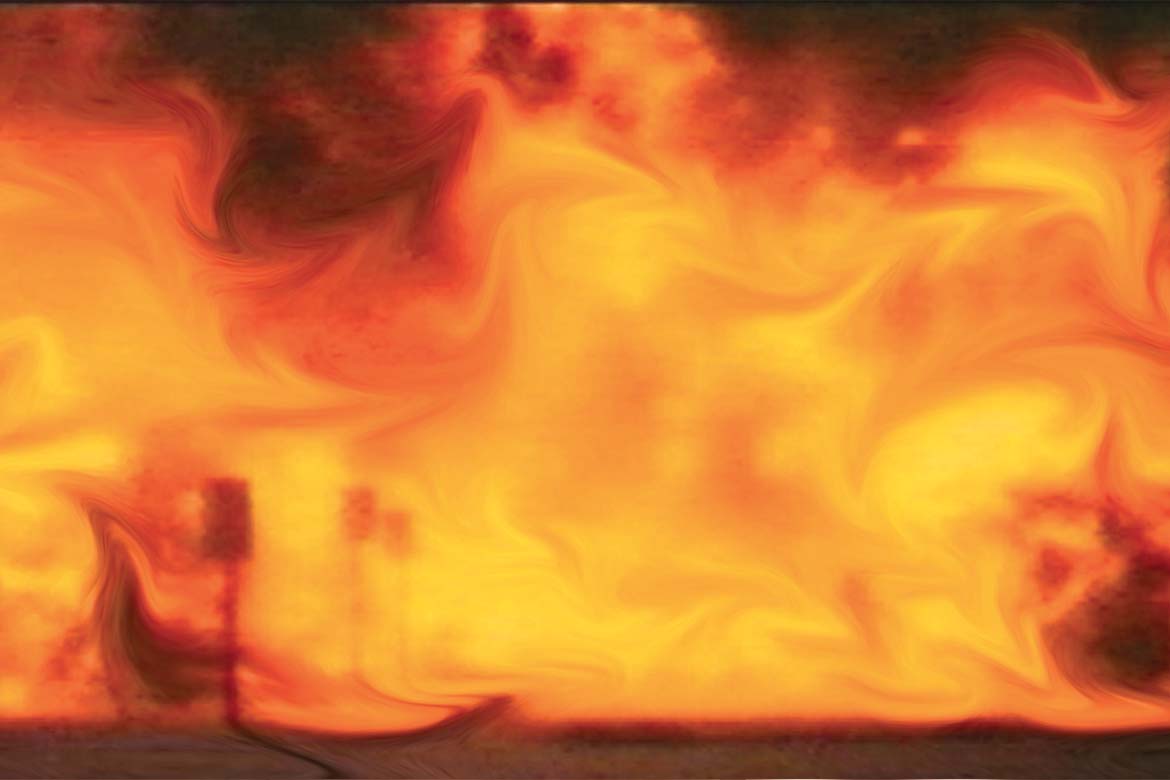Fighting fire risks with data
How can smart systems protect buildings from the potential of electrical fire risks? A smart electrical fire prevention strategy can help.
Often sparking without any warning during the day or at night, electrical fires are fatal. They endanger life, property and the health of the business itself. The impact of the disruption that follows – costing over $2 million in insurance claims on average – often outweighs the cost of initial property damage caused. Once the smoke has cleared, it is the impact of the business disruption caused that proves most lethal to businesses. As Dr Verena Brenner, the Head of Central Services at HDI Risk Consulting GmbH, a global industrial insurer, has said: “The financial loss resulting from business interruption is often greater than the actual damage to property that has caused this interruption.”
A fire response plan is critical to ensuring your employees make it out of the building safely. However, for the business to survive in the long term you need to be aiming for more than just fire response – prevention is by far the best cure, ensuring any danger to staff, property and operations is greatly minimised. To achieve proactive prevention, however, you need data and the ability to turn it into real-time insight.
The Internet of Things (IoT), coupled with a smart, dynamic systems architecture that enables continuous detection and data exploitation, allows organisations to put out fires before they can even begin. A connected approach saves costs by preventing expensive emergency repairs and maintenance, protects your staff and lowers your total organisational risk.
A slow-burning danger
Almost all electrical fires originate in a building or facility’s electrical circuit. Today’s regulations do an adequate job of encouraging businesses to protect their buildings from the dangers of short circuits and overloads, usually by mandating the use of circuit breakers and fuses. However, organisations should also be aware of the risks posed by circuit deterioration and mistakes made during the installation.
Loose cabling and faulty insulation or connections – even something as small as an untightened screw – can significantly increase a circuit’s fire risk. Unprotected electrical switchboards are a hotspot for fires, vulnerable to vermin infestation and internal overheating. Final distribution and final circuits present additional risks due to the quantity of connections, the low cross-section area and the type of cable installation method. The risk of damaged cables is also much higher than in power and distribution circuits.
The lesson here is that fire safety professionals and business leaders can’t simply focus on one area of the circuit while neglecting the others. Circuits age unevenly and unpredictably, so comprehensive, persistent monitoring and predictive maintenance are key to limiting fire risk. Fires often break out without warning and become a dangerous crisis in minutes, so it is therefore crucial that checks go beyond regular ‘one-offs’. Only continual monitoring and detection will ensure you are ready for any eventuality.
Saving costs, saving lives
For maximum protection, organisations need smart, connected solutions that detect fire and the risk of fire at every level and every moment. This means protection at the switchboard, at the circuit and at the distribution level, underpinned by a centralised system for real-time monitoring and detection. This demands a multi-layered technological approach, including a range of smart sensors on the circuit level, systems for edge control and a suite of apps and services to advise and recommend action.
On the circuit level, continuous thermal monitoring is crucial for the early detection of faulty connections and temperature alarming. When installed at critical areas of the switchgear, smart and IoT-connected sensors perform accurate ambient temperature measurements. A smart sensor that can detect smoke and gas particles can then alert operators to dangerously high temperatures before they turn critical.
Smart and proactive fire prevention takes an immense amount of contextualised data, collected across a digital estate and fed back to the building manager.
Smart maintenance
The risk of fire increases as components and equipment age, so choosing the ideal time for maintenance also becomes very important. Analytics can increase efficiency and optimise resources, tracking assets to interpret their status and history while triggering preventive notifications and 24/7 support. This alerts you to equipment faults before they can snowball into business-disrupting crises. It also improves equipment longevity and cuts repair costs, as you can schedule maintenance only when it is needed and avoid expensive emergency repairs on damaged equipment.
When all conditions and variables are known, risk becomes predictable and manageable. The IoT provides unrivalled visibility into your electrical circuit, enabling continuous monitoring and data collection across all your entire electrical estate. This way you can identify where the greatest fire risk is, and rapidly move in to resolve it. By embedding connected solutions across the circuit and enabling real-time analytics, it is possible to create safeguards against the often-unappreciated dangers of faulty installation and ageing components. A connected fire prevention strategy ensures your business can remain safe, operational and risk free.
Fires are preventable. When you follow the right approach for electrical fire prevention with the best tools, a fire can be put out before it even has a chance to begin, saving lives and protecting businesses. In this way, smart electrical fire prevention delivers both reliable protection and peace of mind. Such innovative fire prevention solutions even have the potential to disrupt established markets, such as insurance, by transforming industrial insurance with the help of IoT-driven insurance products and services through data.
More importantly, a much better understanding of causes of fires, assessment and proactive management of fire risks will not only improve safety, it will also enable industry innovation and fuel industry partnerships in the area of data-driven fire prevention.
Nadège Petit
Executive Vice President Global Power Products, Schneider Electric.
Article contributed by IFSEC International. www.ifsec.co.uk


